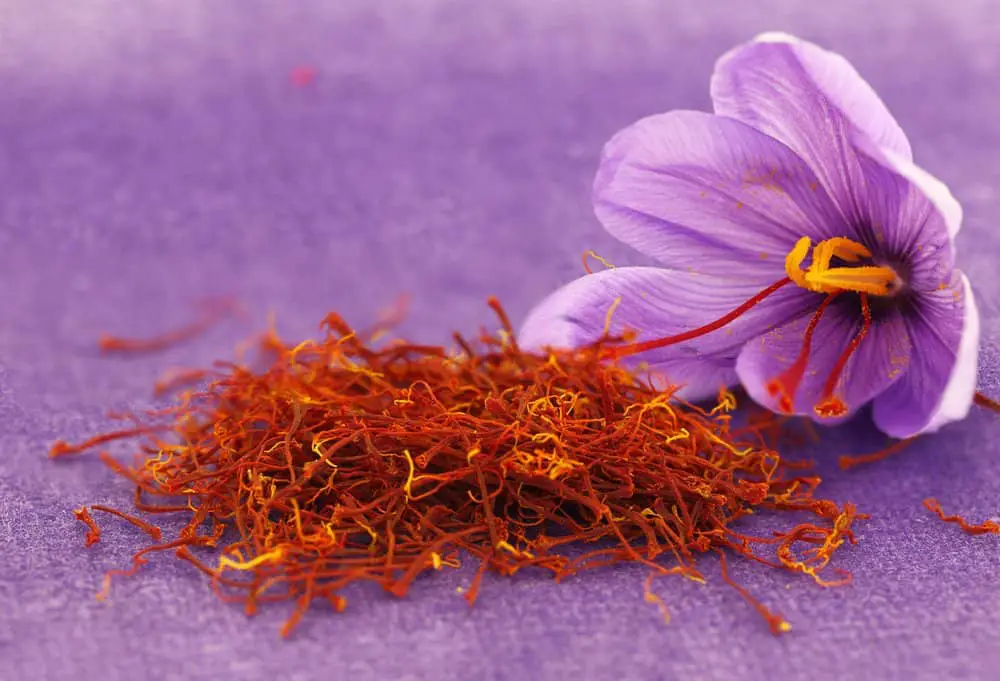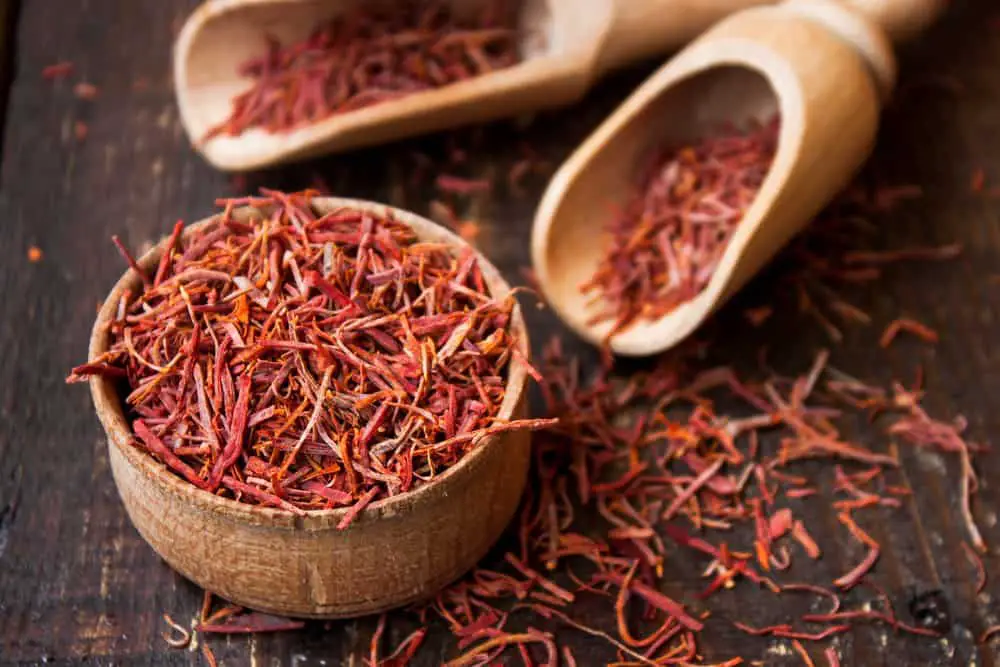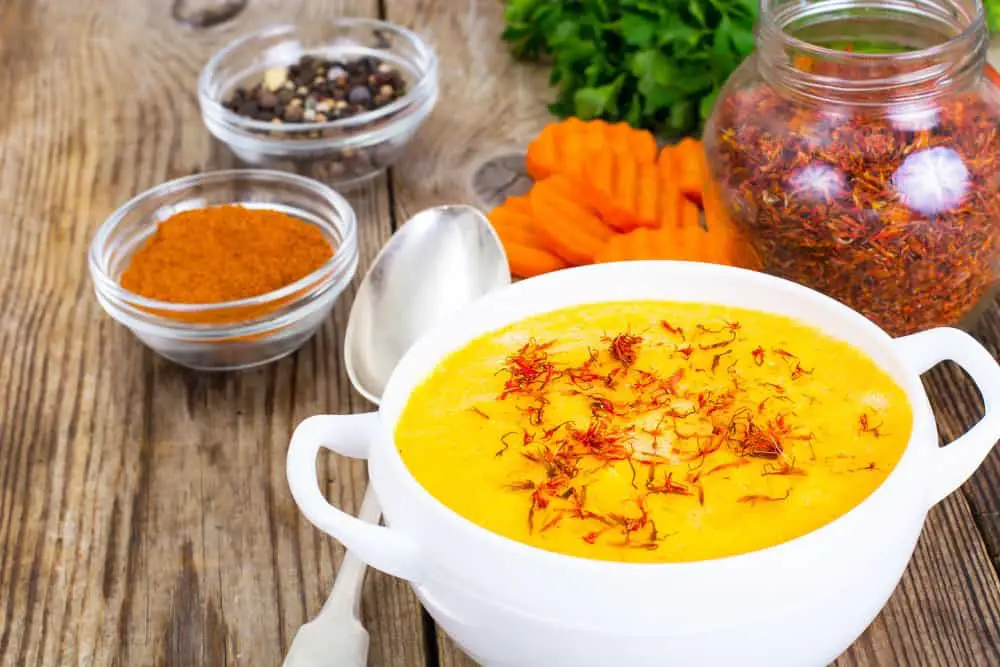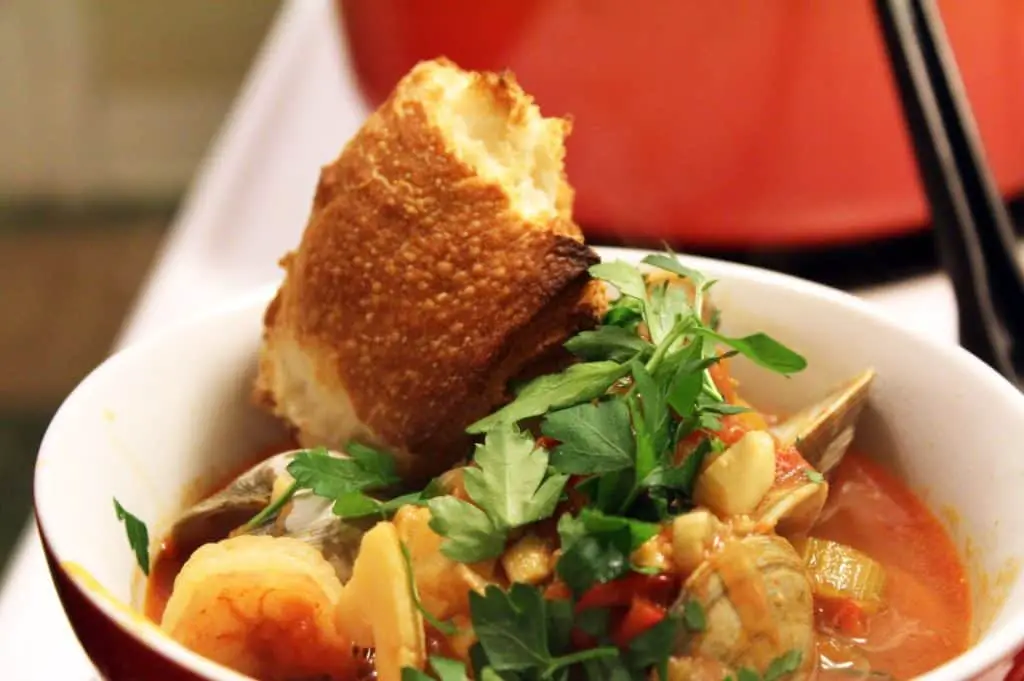Still in the mood of understanding the beauty behind spices, we are onto saffron. There are so many spices out there that give heightening to our food and drinks aside from the ones we frequently patronize.
Spices abound in various parts of the world which people have little or no understanding about, and saffron is one of them. Saffron falls into the category of spices which do not only give taste to food but also offer a lot of health and nutritional benefits. Being one of the most expensive spices on the surface of this earth, I think it is worth our time getting to know what makes it so unique and just what it tastes like.
What Is Saffron?
Saffron is a plant which is obtained from a particular flower known as ‘Crocus sativus.’ In the flower of each saffron plant, there are three stigmas, and a plant can have three or four flowers at a time.
 The flowers of saffron are hand harvested, and it takes a lot of harvesting, about 70,000 or more carefully collected flowers to get a substantial quantity of the saffron which is just a pound of it for that number of flowers, this is the main reason why saffron is the most expensive spice in the world!.
The flowers of saffron are hand harvested, and it takes a lot of harvesting, about 70,000 or more carefully collected flowers to get a substantial quantity of the saffron which is just a pound of it for that number of flowers, this is the main reason why saffron is the most expensive spice in the world!.
After harvesting is carried out, they are dried to make them suitable for use. The stigmas of saffron are dried along with their styles which are referred to as threads, and they still retain their deep orange look.
History Of Saffron?
There are various stories about the exact origin of saffron with one indicating that it was created by the myth god Zeus as an adornment for his bed. Yes, you read that correctly.

Saffron started to gain grounds first in Asia in the early 1700’s, and from there, it began to spread to other parts of the world such as India, Germany and the Arabs over the years and decades that followed, with each country finding specific uses for it.
In the middle ages, countries like China reserved the use of saffron for only royalty and in some other countries; death penalties were set for anyone caught in the act of adulterating saffron with other substance.
Iran also holds a traceable link to the early use of saffron as it was said to be a staple ingredient for cooking around the 17th century.
Best Uses of Saffron?
One of the most common uses of saffron is for dying clothes, with the application of just a few threads of saffron, many clothes can be dyed at a time, the colour it gives upon dying is bright yellow, and it is very economical for that purpose.
Saffron also has a lot of health benefit it provides, in Ayurveda, an ancient Indian healing and treatment practice; saffron is used as one of the essential ingredients for the treatment of patients.
In Western medicine practice as well, research on saffron has shown that it aids significant improvement of many illnesses such as asthma, cancer and severe forms of cough and congestion.

As a spice for food, saffron adds flavour to dishes and acts as a colorant as well, some known foods such as paella and a lot of other Greek dishes. It has a lot of nutrient giving properties such a vitamin C and A amongst others.
What Does Saffron Taste Like?
Saffron is one of those spices that give different flavours to different dishes depending on how it is used, and the quantity of it applied at a time, the taste you get from saffron in risotto will vary from what you get when you take it in tea.
But generally speaking saffron usually tastes sweet, and it is pungent. Hence, a little application of saffron is more than enough to give taste to any dish if you want it tasting right.
Another fact that determines how your saffron will taste is the quality you get. Saffron which contains a higher amount of style mixed with the red stigma will have a far lighter taste than that which consist of only its stigma.
Taking saffron that has been adulterated with paprika or other look-alike substances will also result in a different taste and eating food with fake saffron will definitely give an odd taste.
To get the best sweet, honey-like and earth filled flavour, avoid buying ground saffron, buy whole saffron threads and ask about the quality of what you purchase.
Perfect Saffron Fish Soup
If you are new to experimenting with saffron in dishes, try it out on a well-made fish soup, and there is a very beautiful recipe from Funny Love, the recipe has all the right inclusions for a tasty soup, and it has the procedures with follow-up pictures so that you don’t miss your way.

It looks so attractive, and I know you want to rush into the kitchen and make use of that saffron ASAP. If you are not a fan of seafood, you can make your own substitutions with beef or chicken; it will only take a bit longer to get cooked.
One cool thing about saffron dishes is that they taste better the following day, so leftovers are very welcome at this point.
Spicy!!
Don’t just sit on the sideline while others have all the pleasantness and nutrition that comes along with saffron, invest in some quality spices and see the results sooner than you think.
You shouldn’t be afraid of waste as saffron can last over two years when ground and preserved. If you have time for some gardening on your hands, then you can go ahead and plant some saffron of your own, depending on the weather in your area, it shouldn’t be hard to grow and maintain.
And for all the benefits you get from few threads, it’s worth the try. There are so many dishes you can try your saffron on, and you can get a really impressive amount of them from this cookbook.
